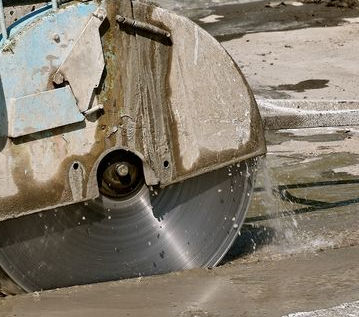Dust Suppression
Dust suppression is a wet dust control method that can be applied to many different operations, such as materials handling, rock crushing, abrasive blasting and operation of heavy construction vehicles.
Pre-wetting surfaces: When blasting, a separate water hose can be strung next to the hose containing the blasting medium. When using heavy construction vehicles on unpaved surfaces, a water truck can spray the site grounds.
Fogging Methods: Fog, fine particles of water, can be an effective dust suppressant in certain situations because it provides a larger contact area than do water sprays. Fog is most effective when the water droplets are approximately the same size in diameter as the dust particles to be suppressed. The dust particles stick to the water droplets. The added weight prevents the particles from remaining suspended in the air.
Steam Methods: Steam is the gaseous state of water. Like fog, steam can reach a larger contact area than sprayed water. Also like fog, steam can visually restrict operations and condense on surfaces.
Electrostatic Charging: Particles from most industrial dust clouds possess either a positive or negative charge. Electrostatic water sprays may enhance dust removal by attracting oppositely-charged dust particles to the charged water droplets.
Surfactants and Other Soil-Binding Materials: A surfactant is a highly concentrated soap or detergent that can be added to water to help control dust. Surfactants are often referred to as "wetting agents." Surfactants break the surface tension of water, allowing the water to penetrate deeper, to better saturate the dust particles and slow evaporation. When using surfactants on a ground surface (soil), the surface stays moist longer and fewer water applications are needed.
Organic Resin Emulsions: Organic resin emulsions are natural resins, emulsified in liquid form such as pine tree sap. They bind and adhere to dust particles as they cure and create a surface crust.
Knowledge Check Choose the best answer for the question.
3-4. A _____ is often referred to as a "wetting agent" because it breaks the surface tension of water to help control silica dust.
You forgot to answer the question!

